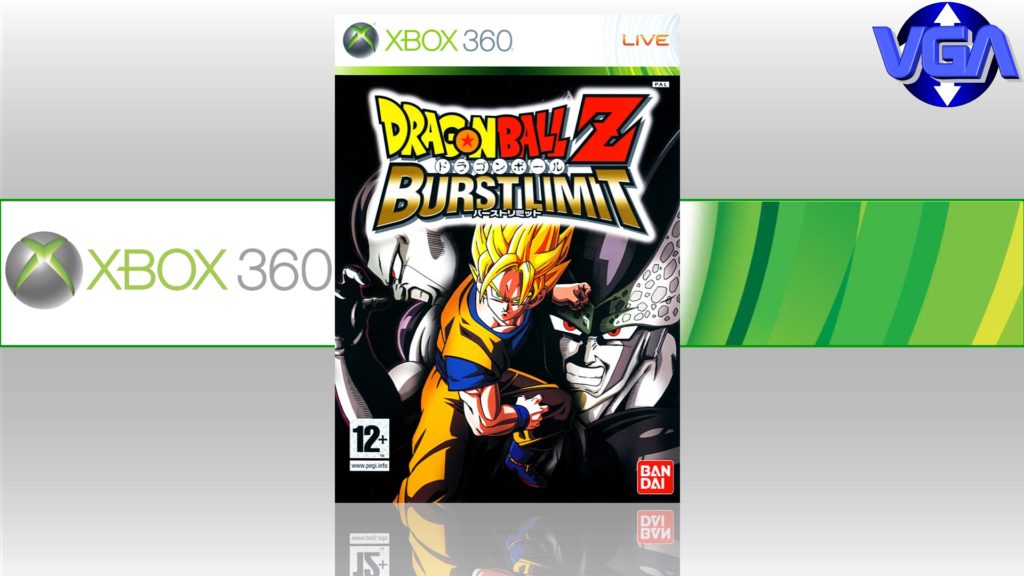Developer : Namco Bandai
Release date : June 6, 2008
Synopsis :
Dragon Ball Z: Burst Limit (ドラゴンボールZ バーストリミット Doragon Bōru Zetto Bāsuto Rimitto?) is a fighting video game for the PlayStation 3 and Xbox 360 based on the anime Dragon Ball Z. The game was developed by Dimps and published in North America and Australia by Atari, and in Japan and Europe by Namco Bandai under the Bandai label. It was released in Japan on June 5, 2008, in Europe on June 6, 2008, North America on June 10, 2008, and in Australia on July 3, 2008.
The game allows the player the opportunity to let their character battle other characters controlled by the in game AI, or another player both on or offline depending on the mode of play the player or players choose. The game’s Z Chronicles story mode allows players the chance to relive key points of the three sagas within the Dragon Ball story with the aid of items called Drama Pieces that give what has been called an immense Dragon Ball experience. The game became a top rated title for the PlayStation 3 and was nominated for a Spike Video Game Award for best fighting game.
The game’s combat presentation is displayed in a 2-D format. Players take control and battle one of the characters from the Dragon Ball Z series. Players are also given the ability to partner with another character within the game, in a vein similar to that of the Capcom and SNK fighting games. However, unlike those games, assisting characters do not fight, but instead provide various bonuses during the battle.
Another attack ability is Aura Spark mode; in this mode players can utilize stronger attacks, but this will eventually drain the player’s ki gauge. Unlike previous games in the series, players are not given the ability to build their ki. Instead, the gauge refills over time.
Taking the place of Skill Capsules are items called Drama Pieces. These appear in the form of in-game cut scenes that can affect the gameplay and overall outcome of the battle, such as the character receiving a Senzu Bean from their partner for health, the character’s defense or attack raised, or their partner jumping in to defend. Drama Pieces can only be activated when certain achievements are met.
One of the game’s main modes of play is the “Z Chronicles” which allows the player the opportunity to relive key points from the Saiyan saga to the Cell Games story arc.
There are also two exclusive stories within this mode. The first where Bardock defeats Frieza and finds himself mysteriously on present day Earth, and the second where Broly journeys to Earth in search of Goku. Another game mode is the Trial mode, where players are given the option of three types of challenges: the Survival Mode, where players must fight a wave of opponents for as long as their health last, the Time Attack Mode, where the player must defeat opponents before a certain amount of time runs out, and the Battle Points Mode, where players must earn battle points in battle.
The game features an online mode where players battle other players locally or internationally, and also post their high scores from the different game modes.
The game was first announced in the December 2007 issue of V Jump magazine. It was stated that the game would utilize 2-D fighting mechanics, the cut scenes would affect the overall gameplay and that it would be released for both the PlayStation 3 and Xbox 360 games consoles the following year in Japan. The January issue of V Jump featured information regarding some of the game’s battle mechanics and battle rules. On January 16, Atari issued a press release announcing that they would be distributing the game throughout North America and that they would retain the Burst Limit title. The February issue of V Jump revealed that the game’s story mode would extend into at least the Cell saga. Later that month, an early demo of the game was presented at the 2008 Game Developers Conference. It was revealed that the game would feature both the English and Japanese voice cast and that it would be expected to be released sometime in the third quarter. A spread in the March issue of V Jump revealed that the game would feature at least thirty-five playable characters and thirteen battle stages. With some of the featured stages being the Cell arena, the unstable Namek, and Earth’s orbit. It would also reveal the cover art and Japanese release date for June 6. Another spread in the April issue of V Jump discussed more on the battle systems and visuals. In May, a playable demo of the game was released on Xbox Live Marketplace and PlayStation Network. On June 10, Atari issued another announcement stating that they had shipped copies of the game to retailers throughout North America. Later that month, the game was unveiled at New York Comic Con for a hands-on demonstration.
Source : Wikipedia


